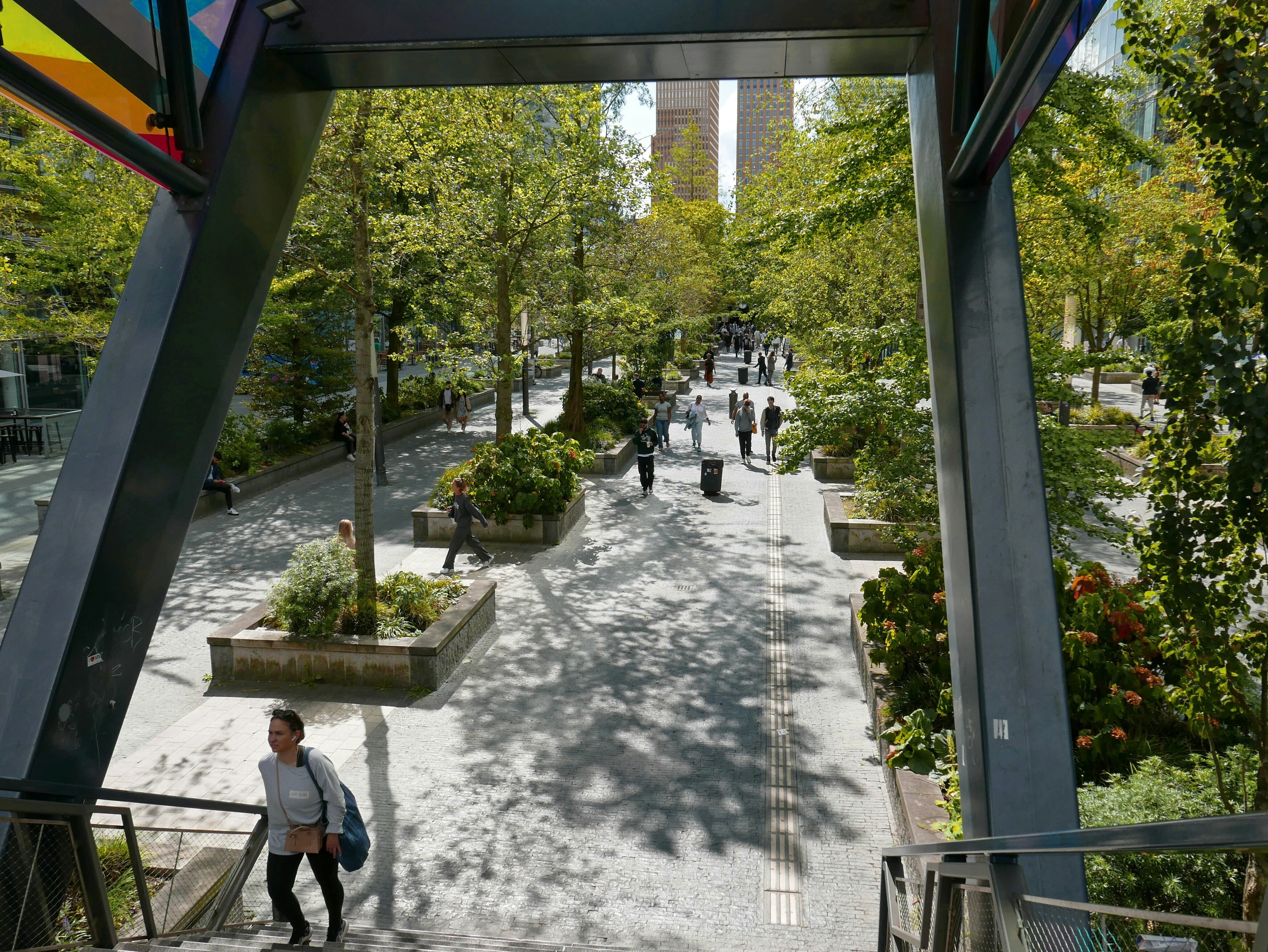Newer school buses could cut student absences

Approximately 25 million children ride buses to school in the US each year.
Image: REUTERS/Hannah Beier
Stay up to date:
Air Pollution
- New buses that do not emit high levels of diesel exhaust fumes could reduce the chances of students suffering from respiratory illnesses and other conditions that lead to missed school days, a new study says.
- It estimates that replacing all pre-2000 model school buses would lead to more than 1.3 million additional days of school attendance each year.
- An Environmental Protection Agency programme that aims to speed up the transition to cleaner buses has provided an average of nearly $6 million a year to school districts.
Replacing all of the oldest school buses in the US could lead to 1.3 million fewer daily absences annually, according to a new study.
The suspected cause of these preventable absences is exposure to high levels of diesel exhaust fumes, which can leak into school bus cabins or enter buses through open windows. Over time, exposure can exacerbate respiratory illnesses and other conditions and lead to missed school days, the researchers say.
“Even relatively short commutes on school buses can dominate students’ daily air pollution exposures,” says Meredith Pedde, an environmental epidemiology research fellow at the University of Michigan’s School of Public Health and lead researcher for the study in Nature Sustainability.
Pedde conducted the research with senior author Sara Adar, associate professor and associate chair of epidemiology at the School of Public Health. Their study is the first to evaluate the effectiveness of the Environmental Protection Agency’s School Bus Rebate Program, which launched in 2012, Pedde says.
“It is well established that traffic-related pollutants can have harmful effects on the body such as inducing inflammation, reducing lung function. and increasing asthma attacks,” she says. “Given the EPA’s random allotment of its clean bus funding, we believe our research clearly establishes the link between upgrading school buses and student attendance. Moreover, it demonstrates the need for continued and increased support for school districts to replace or upgrade their buses.”
For the study, the researchers analyzed data from nearly 3,000 school districts that applied to the EPA’s school bus replacement funding program between 2012 and 2017 and compared changes in attendance rates in 383 school districts that received funding and 2,400 districts that did not.
On average, they found that districts with upgraded buses had a 0.06 percentage point higher attendance rate compared to districts not selected for the clean bus funding. In a district of 10,000 students, that change means six additional students attended school each day. In total, replacing older school buses with newer models prevented at least 350,000 absences in one year in schools across the country.
Accept our marketing cookies to access this content.
These cookies are currently disabled in your browser.
In districts with higher levels of estimated ridership on replaced buses and older fleets of buses, the numbers were higher, with 14 more students per day attending school in high ridership districts and 45 more students attending each day in districts that replaced buses built before 1990.
Applying their results nationwide, the researchers extrapolated that replacing all pre-2000 model school buses would lead to more than 1.3 million additional days of attendance a year.
Approximately 25 million children ride buses to school in the US each year. While it is considered the safest mode of transportation from a traffic accident perspective, concerns about levels of emissions are well documented.
The EPA set out to hasten the transition of school bus fleets to cleaner vehicles in 2012 with its School Bus Rebate Program. The program is ongoing. It provided an average of nearly $6 million annually to school districts to upgrade school buses with cleaner alternatives during the period covered by the study.
The cost of upgrading buses—about $10,000 to retrofit and between $100,000 and $300,000 to purchase new buses—puts districts in the position of using buses as long as possible.
How is the World Economic Forum facilitating the transition to clean energy?
“The average bus is on the road 16 years before it is decommissioned. That means millions of children are still riding older, highly polluting buses to school,” Adar says.
“These findings demonstrate the importance of continued funding for new, clean school buses since we saw measurable improvements in attendance when school districts update their buses,” she says. “Most importantly, we found that replacing the oldest buses will result in the largest benefits for children and their caregivers.”
Additional coauthors are from the University of Washington and the University of Michigan.
Source: University of Michigan
Accept our marketing cookies to access this content.
These cookies are currently disabled in your browser.
Don't miss any update on this topic
Create a free account and access your personalized content collection with our latest publications and analyses.
License and Republishing
World Economic Forum articles may be republished in accordance with the Creative Commons Attribution-NonCommercial-NoDerivatives 4.0 International Public License, and in accordance with our Terms of Use.
The views expressed in this article are those of the author alone and not the World Economic Forum.
Forum Stories newsletter
Bringing you weekly curated insights and analysis on the global issues that matter.
More on Nature and BiodiversitySee all
Sarah Franklin and Lindsey Prowse
April 22, 2025
Jeff Merritt
April 22, 2025
Elizabeth Mills
April 17, 2025
Tom Crowfoot
April 17, 2025




